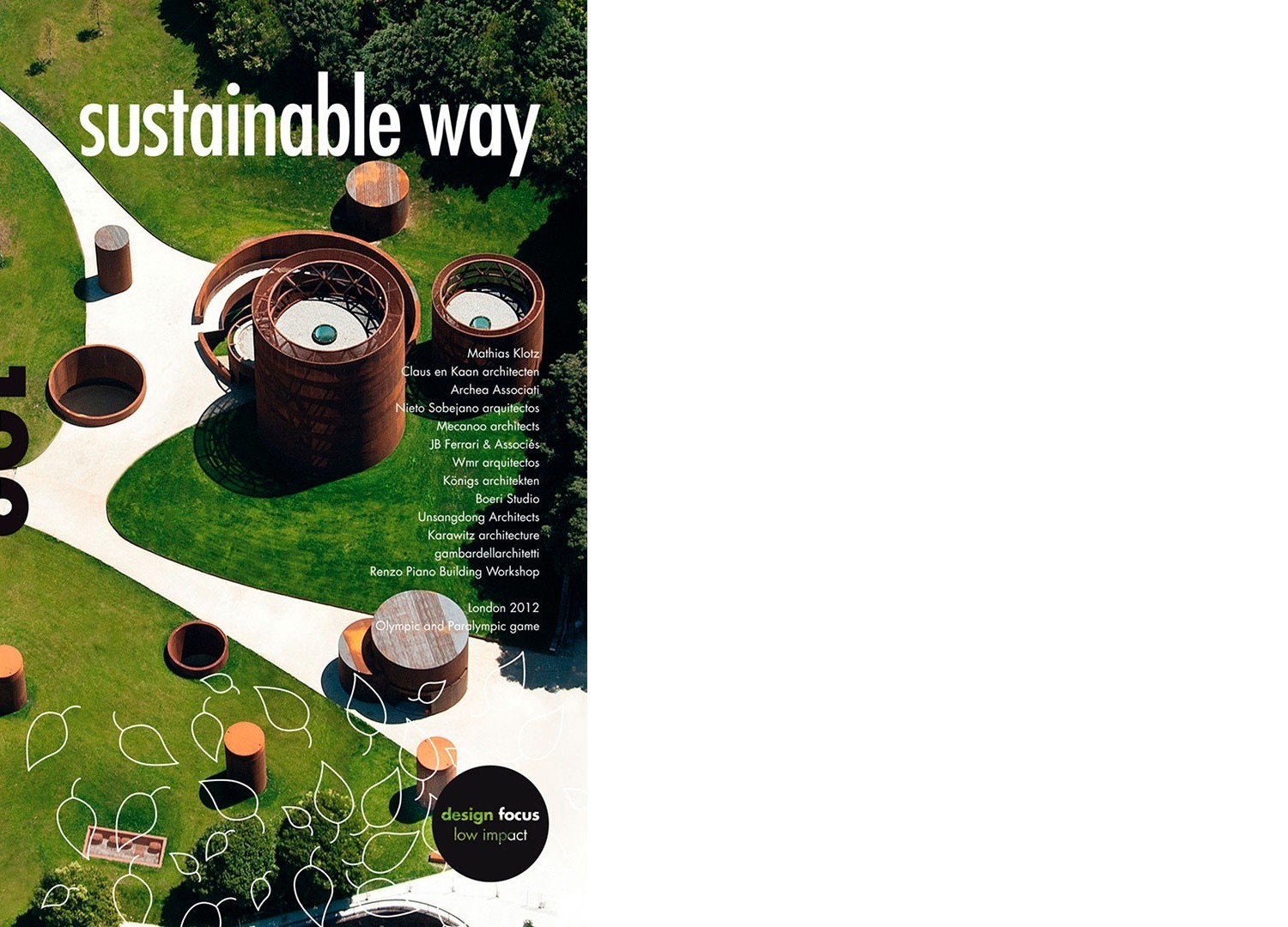
International magazine of architecture and project design may/june 2012
Sustainable way
There are terms that simply define objects or situations, others that merely describe characteristics by turning them into adjectives, and some and this is by now universally recognized for the term sustainability that are capable of revealing ample and profound scenarios, that are indispensable for the quality of life, for its cultural and ethical dimension. The very concept of sustainability, which was formulated for the first time in 1987, is by now used in a much ampler sense and for sectors transversal to the different industrial and disciplinary sectors: from economic and social aspects to environmental ones. It is a well-known fact that the Kyoto agreements have ratified the urgency of a new responsibility for industrial and manufacturing activities on the part of governments across the world, in order to create living and working conditions that centre on a research for operational models characterized by a low environmental impact. The diffused awareness of the climatic emergency, associated with the indispensable decision to reduce the emissions of CO2 in the atmosphere, one of the principal causes of the global warming, has by now given the term sustainability the dimension of something necessary for the very existence of life on earth. After years of unrestrained consumption of every kind of environmental resource, the idea that no development and thus well-being is possible without a balanced relationship with the environment and our surroundings has become consolidated also in the public opinion.
The predicted global demographic increase, which indicates that two thirds of the world’s population will be concentrated in the metropolitan areas, and the awareness that more than 35% of the energy produced in the world serves to meet the needs associated with the home, have involved architecture in a reformulation of the foundations of architecture and a reflection on the values and necessities linked to human activities. The term architecture is here not understood in a strictly disciplinary sense but as a wider concept, that ranges from the landscape to the city, to the building and construction techniques and materials. In extreme synthesis, the horizon of actions aimed at changing the natural context caused by Man through his incessant construction of infrastructures and buildings necessary for contemporary day-to-day existence play a fundamental role in the pursuit of that delicate balance that we identify with the term sustainability, an equilibrium that means respect for differences, an attentive use of natural resources, technological research on the production of energy from renewable sources, associated with the ability to return to styles and ways of life that were customary before fuel fossils were discovered and put to use.
Marco Casamonti
Download cover and index
Download introduction of Marco Casamonti
Download Olympic and Paralympic Sustainable Games of Laura Andreini
Download GEL – Green Energy Laboratory


